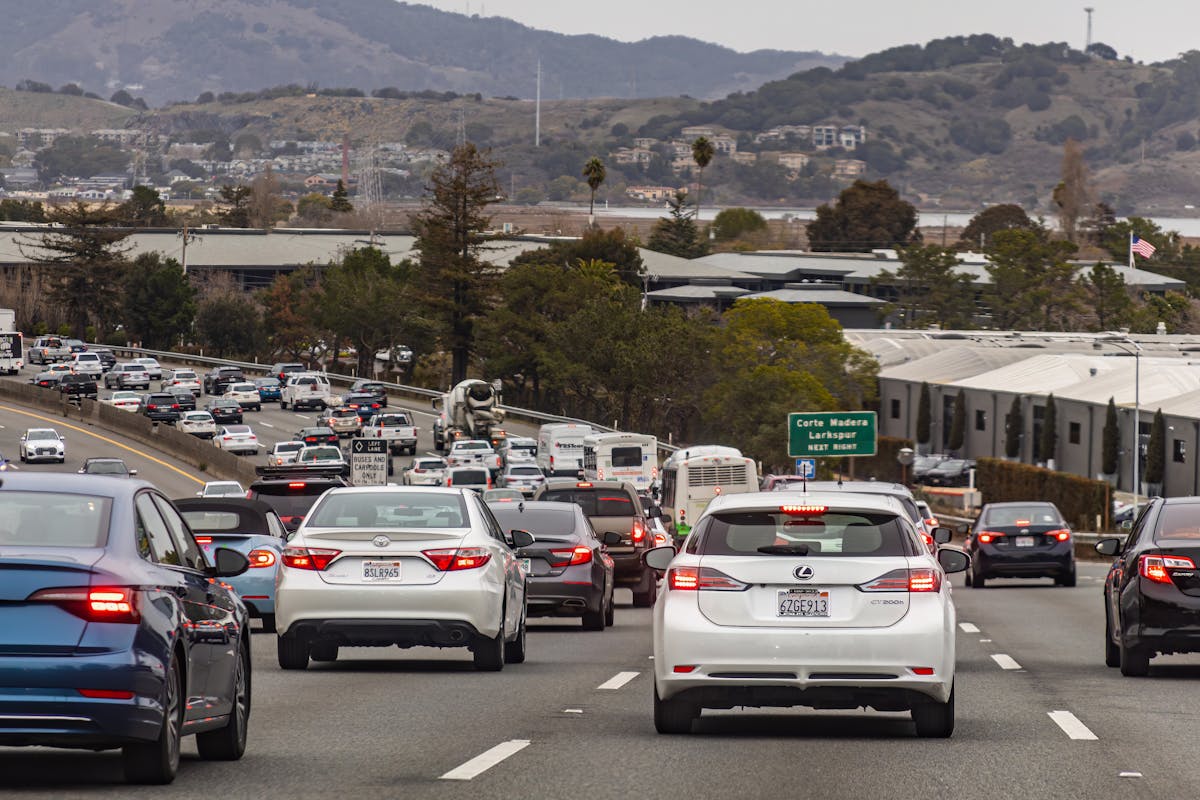In the domain of California’s auto accident litigation, the principle of pure comparative negligence plays a critical role in determining the compensation claims. This legal doctrine, unique in its ability to assign liability proportionally among parties involved in the accident, allows even at-fault drivers to recover damages. Yet, it also reduces the potential compensation in direct correlation with the percentage of fault. The complexity of applying this doctrine in real-world scenarios, and its profound impact on the outcome of these cases, warrants an in-depth exploration.
Understanding Pure Comparative Negligence
What exactly is pure comparative negligence? It’s a legal principle used in certain states, including California, to attribute fault in car accident cases. In these negligence examples, the injured party can recover damages even if they were 99% at fault. The recovery, however, is reduced by their level of fault determined by the court or the insurance adjuster. This fault determination is critical in shaping the outcome of the case. The pure comparative negligence rule guarantees a fair distribution of liability, allowing every driver to take responsibility for their actions. Consequently, it’s essential for individuals involved in accidents to understand this concept as it directly impacts the compensation they can receive for their injuries.
California’s Negligence Laws
California’s negligence laws, specifically related to driving, are guided by the principle of pure comparative negligence, which allows for a fair and proportionate distribution of fault among the involved parties. This system is built on a set of negligence standards and liability factors that help determine each party’s share of responsibility.
- Negligence standards in California require plaintiffs to prove that the defendant owed a duty to the plaintiff, breached that duty and that the breach directly caused the plaintiff’s injury.
- Liability factors in a car accident may include drunk or distracted driving, disobeying traffic laws, or failing to maintain a vehicle.
- The defendant’s liability is reduced by the plaintiff’s percentage of fault.
- Even if a plaintiff is 99% at fault, they can still recover 1% of their damages from other at-fault parties.
Application in Car Accident Cases
When examining the application of pure comparative negligence in car accident cases, one must understand that each case is unique and the distribution of fault can vary greatly. The concept of pure comparative negligence allows for liability assessments to be made, even if the plaintiff has been found partly at fault. It’s essential to recognize that negligence defenses can be employed by either party in an attempt to reduce their own liability. For instance, a defendant may argue that the plaintiff’s actions contributed to the accident, thereby reducing the defendant’s percentage of fault. It’s vital to consult with a knowledgeable attorney who can analyze the specifics of your case and provide guidance on how the principle of pure comparative negligence might apply.
Determining Fault Percentage
In the vast majority of car accident cases, determining the fault percentage is a vital aspect of the pure comparative negligence model. This process involves a thorough fault assessment and liability determination, which are essential in establishing the level of responsibility each party carries for the accident.
- Evidence collection: This includes photographs, witness testimonies, and police reports.
- Expert consultation: Accident reconstruction experts can offer valuable insights into the incident.
- Legal analysis: Lawyers and judges analyze the gathered information and apply relevant laws.
- Negotiation: Parties can negotiate the fault percentage based on the evidence and legal analysis.
The fault percentage is vital in establishing who owes compensation and to what extent. It is a fact-based, client-focused process that requires legal expertise.
Impact on Compensation Claims
Given the complexities of the pure comparative negligence model, the fault percentage greatly influences compensation claims in car accident cases. This model stipulates that compensation is adjusted based on the degree of each party’s fault. As a result, understanding these compensation factors is critical to accurately assess the potential claim adjustments you might encounter. For instance, if you are found to be 30% at fault, your compensation would typically be reduced by that percentage. This means that a claim initially worth $100,000 would be reduced to $70,000. It is imperative to consult with experienced legal professionals who possess deep understanding of the nuances of pure comparative negligence, ensuring an accurate representation of your liability and consequently, a fair compensation claim.
Common Scenarios Explained
To further understand the concept of pure comparative negligence in California, it’s helpful to contemplate common accident scenarios. These real-life examples illuminate how this legal principle is applied and can directly impact the outcome of a claim. In the following discussion, we will elucidate these scenarios, providing a clearer view of its application in the context of auto accidents.
Defining Pure Comparative Negligence
Pure comparative negligence, a pivotal principle that governs liability distribution in California car accidents, often surfaces in many legal scenarios. This principle, central to negligence definitions, allows for a comparative analysis of each party’s responsibility in the event of a car crash.
To assist in understanding this principle, consider the following points: – Pure comparative negligence assigns blame proportionally to each party involved in an accident based on their degree of fault. – Unlike other systems, it allows victims to recover damages even if they are 99% at fault. – The court determines the percentage of fault for each party. – The victim’s compensation is then reduced by their percentage of fault.
This principle guarantees fairness in liability distribution, offering victims a chance for reparation even when they share blame.

Real-Life Accident Examples
Understanding the principle of pure comparative negligence becomes clearer when applied to real-life scenarios. Take, for example, a car accident where both drivers are found to be at fault. Driver A, speeding and distracted, crashes into Driver B, who was making a left turn without signaling. In this case, the court may rule that Driver A is 70% at fault for speeding and distraction, while Driver B bears 30% of the blame for the lack of signal. This is a common accident outcome in California where pure comparative negligence applies. The damages rewarded to each party will be reduced by their respective fault percentages. These real life scenarios emphasize the importance of understanding the nuances of negligence law.
Role of Insurance Companies
In the vast majority of California car accidents, insurance companies play a pivotal role. They conduct thorough insurance evaluations to determine the extent of liability and damage. They are also critical in policy negotiations, setting the terms for coverage limits and premium costs.
Insurance companies in California car accidents typically engage in the following:
- Evaluating the accident scene and the damage to the vehicles involved
- Evaluating the injuries sustained by the parties involved
- Determining the percentage of fault of each party under California’s pure comparative negligence law
- Negotiating settlements with the parties involved or their legal representatives
This role is significant in shaping the end result of an accident claim, influencing the compensation a victim may receive.
Legal Assistance for Negligence Cases
Steering through the complexities of negligence law in California can be a formidable task, thereby highlighting the critical role of legal counsel in such cases. A competent attorney not only helps interpret the law but also actively aids clients in maneuvering through settlement negotiations. Their expertise can be instrumental in ensuring fair treatment and obtaining just compensation for damages incurred in car accidents.
Understanding Negligence Law
While it may seem intimidating, grasping the complexities of negligence law is essential for individuals who have been involved in car accidents in California. Negligence law primarily focuses on understanding the concept of fault and attributing liability based on the same.
Key elements in understanding negligence law include:
- Negligence definitions: In legal terms, negligence refers to the failure to exercise the care that a reasonably prudent person would have in similar circumstances.
- Duty of Care: The obligation one person owes to another to prevent harm.
- Breach of Duty: Occurs when one person violates their duty of care.
- Liability assessments: This involves determining who is legally responsible for the damages incurred.
Understanding these aspects can empower you to navigate the complex legal landscape more confidently.
Role of Legal Counsel
Securing the services of a seasoned legal counsel is instrumental when dealing with negligence cases in California. Professional legal representation can navigate the complexities of the state’s pure comparative negligence rule, providing a formidable defense or pursuing justified claims. Attorney expertise aids in accurately establishing liability, determining the degree of fault, and effectively presenting your case before a judge or jury. Proficient lawyers also help in interpreting insurance policy language, thereby ensuring you receive your rightful compensation. In addition, a skilled attorney will be able to anticipate and counter any defenses raised by the opposing party. Indeed, in the intricate domain of negligence cases, having a competent legal counsel by your side is not just a necessity, but a critical advantage.
Navigating Settlement Negotiations
Beyond the courtroom battles, the role of legal counsel extends to the negotiation table. Leveraging settlement tactics and negotiation strategies, attorneys work to secure fair compensation for their clients.
Various factors underpin these negotiations: – Understanding the case: Attorneys thoroughly review the case, evaluating the damages, and gathering evidence. – Calculating damages: They calculate the extent of financial losses, including medical expenses, lost wages, and property damage. – Negotiating with insurance companies: Armed with facts, attorneys negotiate assertively to counter lowball offers. – Finalizing the settlement: After reaching an agreement, attorneys guarantee the formalities are correctly completed.
Through these steps, legal counsel provides invaluable support in steering through the intricate path of settlement negotiations in negligence cases.
Protecting Your Rights After an Accident
In order to safeguard your rights following a car accident in California, understanding the concept of pure comparative negligence is essential. This principle is paramount during the accident aftermath, as it influences the subsequent legal proceedings. It determines the proportion of responsibility each party holds, affecting the final compensation. Legal protections are in place to assist victims in maneuvering this complex process. Expert legal advice can guarantee that your rights are not infringed upon, helping you claim the right compensation for your losses. Remember, protecting your rights involves more than just understanding legal jargon. It requires proactive involvement, gathering accurate information, and seeking professional help when needed. With the right knowledge and assistance, you can navigate through this challenging time confidently.
Frequently Asked Questions
What Happens if Both Drivers Are Equally at Fault in a Car Accident?
In cases of equal liability, California’s Pure Comparative Negligence law allows both drivers to recover damages, with the award reduced by their shared responsibility for the accident. Legal expertise is essential to navigate this complex process.
How Is Negligence Proven in a Car Accident Case in California?
In California, negligence in car accidents is proven through four elements: duty, breach, causation, and damages. The plaintiff holds the burden of proof, demonstrating the defendant’s failure to exercise reasonable care, leading to the accident.
Can I Still Claim Damages if Im More Than 50% at Fault?
Yes, under California’s pure comparative negligence law, even if your fault percentage exceeds 50%, you can still claim damages. However, your damage recovery will be reduced in proportion to your degree of fault.
How Does Pure Comparative Negligence Affect My Insurance Premium?
Pure comparative negligence can affect your insurance premium as fault determination is considered. If you’re found partially at fault, your insurance rates may increase to reflect the shared responsibility of the accident.
What Steps Should I Take Immediately After a Car Accident to Protect My Rights?
Immediately after a car accident, prioritize documenting evidence at the scene and notifying authorities. This guarantees factual accuracy, protects your rights, and aids in any potential legal proceedings that may arise from the incident.

